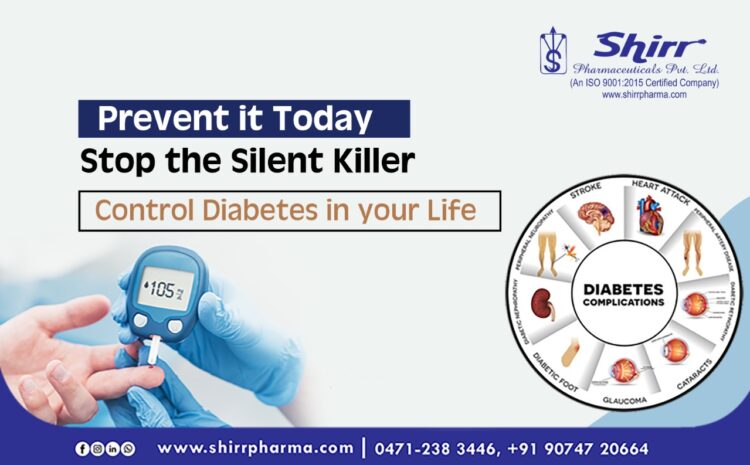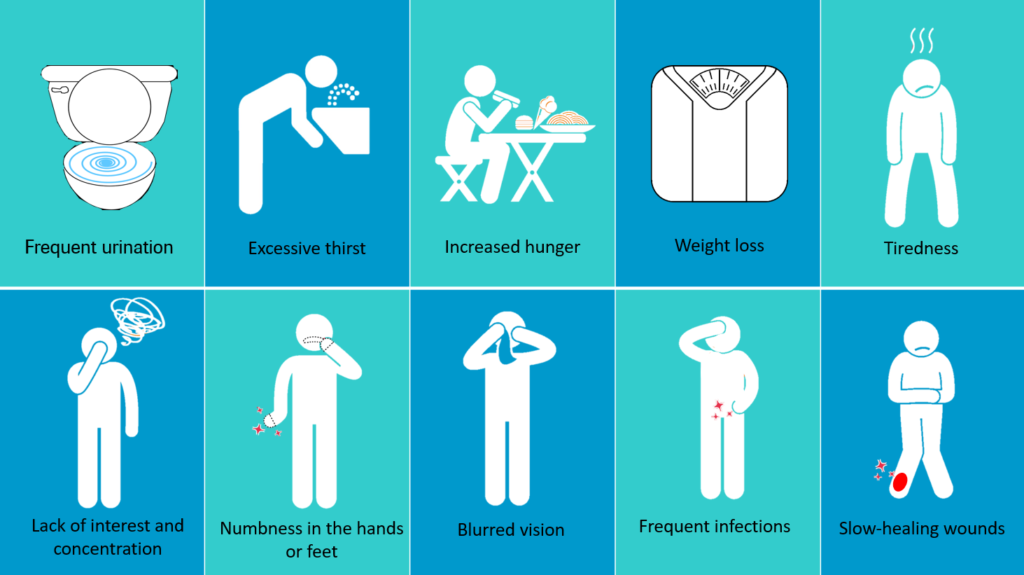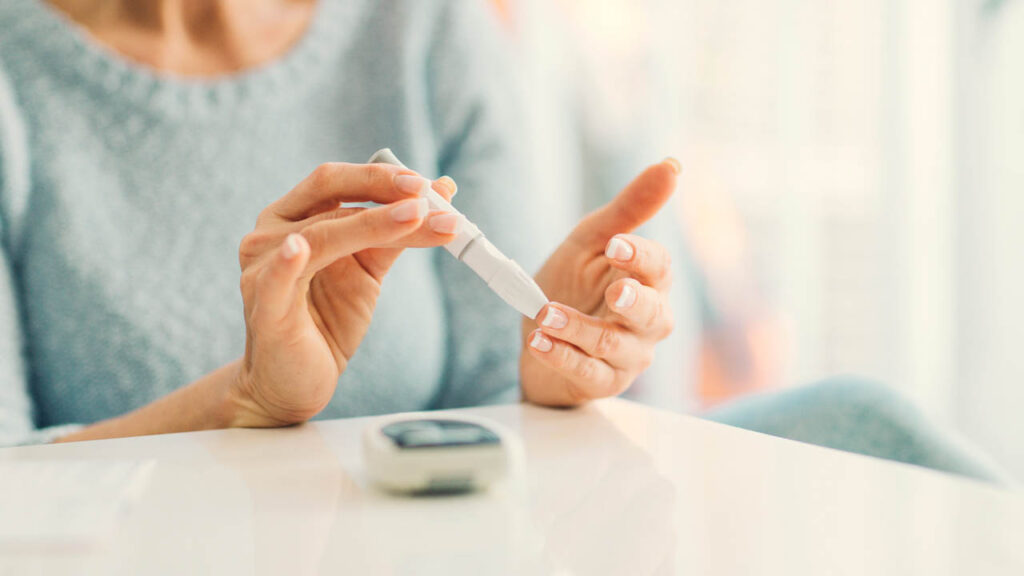
How to CONTROL DIABETES MELLITUS
Though clinically termed as Diabetes mellitus, the dialectal familiarity amongst the public for the same is Diabetes. Diabetes Mellitus is a type of chronic metabolic disease construed by a high level of blood sugar (Hyper-glycemia) over a protracted timeframe.
During the course of digestion, foods eaten gets broken down into various different nutrient sources, including sugar (glucose) from consumption of carbohydrates like rice, chapati, bread etc. When glucose is released in the bloodstream, it needs help – a “transporter” – to reach its destination, which is inside the body’s cells, where it is stored and used as energy. This help or “transporter” is insulin.
For more information on Viljust M Tablets . Click on the image above —>
Now, insulin is a hormone produced by the pancreas, an organ situated behind the stomach. While in the process of digestion, pancreas releases insulin into the bloodstream. Insulin regulates the glucose by performing the role of “transporter and key” that moves it from the bloodstream and unlocks the cell wall “barrier,” allowing the glucose to enter body’s cells. Glucose is a vital source of energy for the cells that make up body’s tissues and organs, for them to function effectively. It is also the main source of Brain’s fuel.
Type 2 Diabetes Mellitus occurs either when the pancreas does not produce enough insulin or when the body cannot effectively use the insulin it produces i.e., the cells stop responding and using the insulin effectively, thus hindering the body to take up glucose into its cells and use it for energy, resulting in the built up of excess sugar in the bloodstream leading to serious health complications.
Uncontrolled hyper-glycemia can lead to serious consequences causing impairment to your body’s organs and tissues such as Heart, Kidneys, Eyes, Nerves and Blood Vessels. Ailments associated with diabetes include: cardiovascular disease, Stroke, chronic kidney, foot ulcers, neuropathy, nephropathy, cognitive impairment etc.
Diabetes mellitus is mainly categorised into the following sub-types
Type 1 Diabetes Mellitus
Type 2 Diabetes Mellitus
Prediabetes
Gestational Diabetes Mellitus

Type 1 Diabetes Mellitus – is an autoimmune disease i.e., the body attacks itself. Here the insulin-producing beta cells in your pancreas are attacked and destroyed by antibodies (exact cause for the same remains unknown, yet), resulting in organ damage and ceasing of insulin production. It could also happen because of complications with insulin producing cells in the pancreas.It was earlier known as “Juvenile” diabetes, because, more often it was diagnosed in Adolescent’s and children, however, the same can develop at any age during a person’s life span. Also, called insulin-dependent diabetes, as one need to take external insulin every day.
Type 2 Diabetes Mellitus – happens either when the pancreas does not produce enough insulin or when the body cannot effectively use the insulin it produces i.e., the cells stop responding and using the insulin effectively, thus hindering the body to take up glucose into its cells and use it for energy, resulting in the built up of excess sugar in the bloodstream This is the most common type of diabetes. Commonly known as adult-onset diabetes or insulin-resistant diabetes, as it usually occurs in middle-aged and older people, however, in recent years the same is becoming more and more common in Teens and Children, largely because of sedentary lifestyle and poor eating habits.
Prediabetes – is the stage before Type 2 Diabetes Mellitus i.e., blood glucose levels are higher than normal but not high enough to be officially classified as Type 2 diabetes. If left uncontrolled the same can lead to type 2 diabetes. However, timely diagnosis and adoption of healthy eating habits and active lifestyle can reverse Prediabetes.
Gestational Diabetes Mellitus – is a condition in which an insulin-blocking hormones produced by the placenta prevents the body from using it effectively, as a result glucose builds up in the blood instead of being absorbed by the cells causing Gestational Diabetes Mellitus. It usually goes away after pregnancy. However, if a person has had gestational diabetes, then, she is at a higher risk of developing Type 2 Diabetes Mellitus at a later stage in life.
SYMPTOMS
Diabetes symptoms vary depending on how much your blood sugar is elevated. Some people, especially those with prediabetes or type 2 diabetes, may sometimes not experience symptoms. In type 1 diabetes, symptoms tend to come on quickly and be more severe.
In Diabetes Mellitus depending upon the elevated blood sugar levels symptoms varies, especially people with Prediabetes or Type 2 Diabetes Mellitus may or may not experience symptoms.In Type 1 Diabetes Mellitus, symptoms tend to be severe. However, general signs and symptoms of Type 1 and 2 Diabetes Mellitus include and not limited to
- Increased Thirst and Hunger
- Frequent Urination
- Unplanned and Unexplained Weight Loss
- Fatigue and Tiredness
- Blurry Vision
- Slow or Unhealing Wounds and Cuts
- Numbness & Tingling in Hands or Feet
- Presence of Ketones (substance that the body produces when cells do not get enough glucose because of either absence or low levels of insulin) in Urine and Blood.

PREVENTION ADVICE & TREATMENT
The treatment for Diabetes Mellitus is primarily focused on the management of the ailment and to improve quality of life, as there is no permanent cure for the same. Doctors may advice to make certain lifestyle and dietary changes to control the ailment, before starting medication. Some of the remedies include
- Increase fibre intake by eating vegetables, fruits, whole grains and nuts.
- Avoid/cut back on trans fats, saturated fats, red meats and refined carbohydrates, soft drinks/sodas, fast foods etc.
- Chart a regular and smaller portion meal pattern for the day and keep yourself well hydrated.
- Try shedding excess calories, if over Over-weight or Obese.
- Avoid/reduce stress via Yoga and Meditation, an ancient practice that involves breathing, postural exercises and calming the mind.
- Engage in regular exercise and physical activities for at least 30 mins a day
- Make sure to keep Cholesterol Levels and Blood Pressure under control. In case of existing co-morbidities, take therapeutics as advised by the doctor.
Now, Insulin is the preferred course of treatment for Type 1 Diabetes Mellitus, with or without the combination of other diabetic oral medications, as advised by your doctor.
Four types of insulin are majorly used, depending on the onset and duration of action:
- Rapid-acting insulin – onset within 15 minutes and has a duration of 3 to 4 hours.
- Short-acting insulin – onset within 30 minutes and has a duration of 6 to 8 hours.
- Intermediate-acting insulin – onset within 1 to 2 hours and has a duration of 12 to 18 hours.
- Long-acting insulin – onset within a few hours and has a duration of 24 hours or longer.

In cases where Diet and Exercise alone fail to yield the desired result in managing Type 2 Diabetes Mellitus prescription medication may be initiated by the doctor, post medical assessment. Medication drug classes include:
- Alpha-glucosidase inhibitors – Slows the body’s breakdown of carbohydrates and reducing glucose absorption in the small intestine.
- Biguanides – Reduces the amount of glucose the liver produces, improves how insulin works in the body, and slows down the conversion of carbohydrates into glucose.
- DPP – 4 (Dipeptidyl Peptidase – 4) inhibitors: helps pancreas to release more insulin after meals and also lower the amount of glucose released by the liver.
- GLP – 1 (Glucagon-like Peptides – 1): delays the release of insulin, lowers glucose release from the liver after meals and delay food emptying from the stomach.
- Glinides (Meglitinides): lowers blood glucose levels by getting the pancreas to release more insulin.
- SGLT2 (Sodium-Glucose Cotransporter – 2) inhibitors: works on the kidneys to remove glucose from the body through urine.
- Sulfonylureas: lowers blood glucose levels by getting the pancreas to release more insulin.
- Thiazolidinediones: improve the insulin’s work by allowing more glucose to enter into muscles, fat and the liver.




